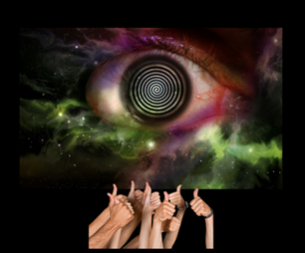Robin Williams: A Heartbreaking Example of How “Gallows Humor” Can be Used to Deflect Emotional Anguish
Robin Williams: A Heartbreaking Example of How “Gallows Humor” Can be Used to Deflect Emotional Anguish
 One of the gifts that Robin Williams had so plentifully was the ability to laugh at life’s tribulations. In the week since his death, many of us have seen clips of television interviews with Robin over the years in which he joked about addiction, depression, and even suicide. Being able to address such difficult topics with humor actually allows some taboo subjects to be brought into the public discourse. And it may also “normalize” individuals’ experiences that are usually pathologized, creating permission for others to discuss their own “dark secrets”.
One of the gifts that Robin Williams had so plentifully was the ability to laugh at life’s tribulations. In the week since his death, many of us have seen clips of television interviews with Robin over the years in which he joked about addiction, depression, and even suicide. Being able to address such difficult topics with humor actually allows some taboo subjects to be brought into the public discourse. And it may also “normalize” individuals’ experiences that are usually pathologized, creating permission for others to discuss their own “dark secrets”.
Listening to some of those interviews with the hindsight of knowledge of Robin’s suicide, however, is disturbing. It is clear that he was masking the distress in his life with humor, making a joke of the deep heartbreaking pain he was struggling with. And too often the interviewers willingly colluded with his subterfuge by laughing at his jokes, thus encouraging him to continue avoiding honestly acknowledging his tragic struggle to choose between life and death. Their response is understandable; audiences the world over laughed with Robin as he made jokes about his deeply intimate distress.
Allegorical Lesson
Perhaps we can give value to this gentleman’s tragic suicide by recognizing in it an allegorical lesson regarding “gallows humor”. When is the ability to laugh at life’s tribulations serving a healthy purpose, and when is it an emotional defense, desperately attempting to deflect attention away from the reality of someone’s unbearable anguish?
First, it is important to acknowledge the reality of that personal pain. Dick Cavett recalls an exchange years ago in a small club. Robin Williams came off stage after bringing a cheering audience to its feet. “Isn’t it funny how I can bring great happiness to all these people,” he said. “But not to myself.” So often Robin Williams transparently acknowledged his agonizing struggle with his inner demons. And that can only be healthy for everyone involved.
Healthy or Deflecting
A further factor in discerning whether humor is being used as healthy coping or as desperate deflection is whether it is compulsive and constant or are there serious interludes of acknowledging the deep pain without jokes. Robin’s statement to Dick Cavett is an example of just such a healthy recognition. Gilbert Gottfried says about his friend Robin Williams, “He worshipped Jonathan Winters, and you definitely could see the similarities. One big one is that they were the same on stage and off. Every now and then he would talk seriously, but more often than not, he was that guy. Every now and then, another part of him would pop up that was quiet.” Being “that guy” that could joke about his personal pain was so reinforced for him that it was no doubt nearly impossible to escape the allure of being “that guy” almost all the time. A glaring example is Robin Williams interviewing himself about the time he considered suicide.
Gallows Humor
Gallows humor is humor in the face of or about very unpleasant, serious, or painful circumstances. Gallows humor is typically made by or about the victim of such a situation, but not the perpetrator of it.
It is, of course, not just comedians or entertainers that use gallows humor. We often notice this in family situations where there is what is referred to as the “big pink elephant” in the room. This means that there is something abusive, oppressive, or threatening happening that everyone knows they are not supposed to speak about. An example of this is when the father in the family comes home drunk, knocks over the kitchen table with the meal that his wife has prepared, and starts screaming at everyone. The mother may be crying and perhaps would get very busy in the kitchen, making his favorite dessert in the attempt to diffuse the father’s anger. The children might turn up the television very loud or start making silly jokes to relieve the tension in some way. The laughter is very contagious and certainly hysterical – sometimes the jokes seem so funny that the children laugh until they cry. This is gallows humor. It is a way to defend against unbearable pain.
These scenes were a common experience for many children who grew up with alcoholic parents, abusive families, or sexually abusive parents.
Gallows Humor in Therapy
It is important for therapists to be aware of this type of humor. People that have learned to use gallows humor as children may spend much of their time in therapy keeping the therapists and drug counselors laughing. I had a client one time who told me she wasted five years of paying for weekly therapy sessions by keeping her therapist laughing. The therapist said to her one day, “You are my favorite client. I always look forward to your visits.” This client finally became aware that gallows humor was her biggest defense system and she had paid many a therapist thousands of dollars to help her avoid her feelings by colluding with her biggest defense: her sense of humor.
Hypnotherapy is a reliable way to assist an individual to get to the real layers of real feelings, going down deeper into the subconscious mind where ego defenses like gallows humor are left behind.
Let’s determine not to collude with anyone who is using humor, jokes, or clever repartee to avoid a “big pink elephant” in the conversation.
Our hearts go out to Robin William's family and friends.









